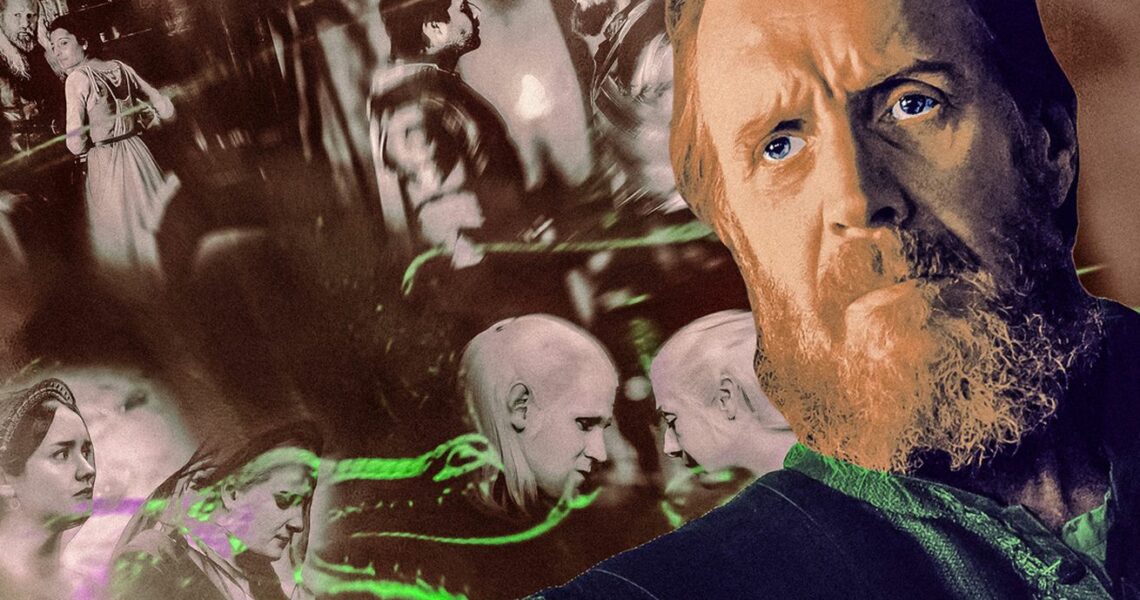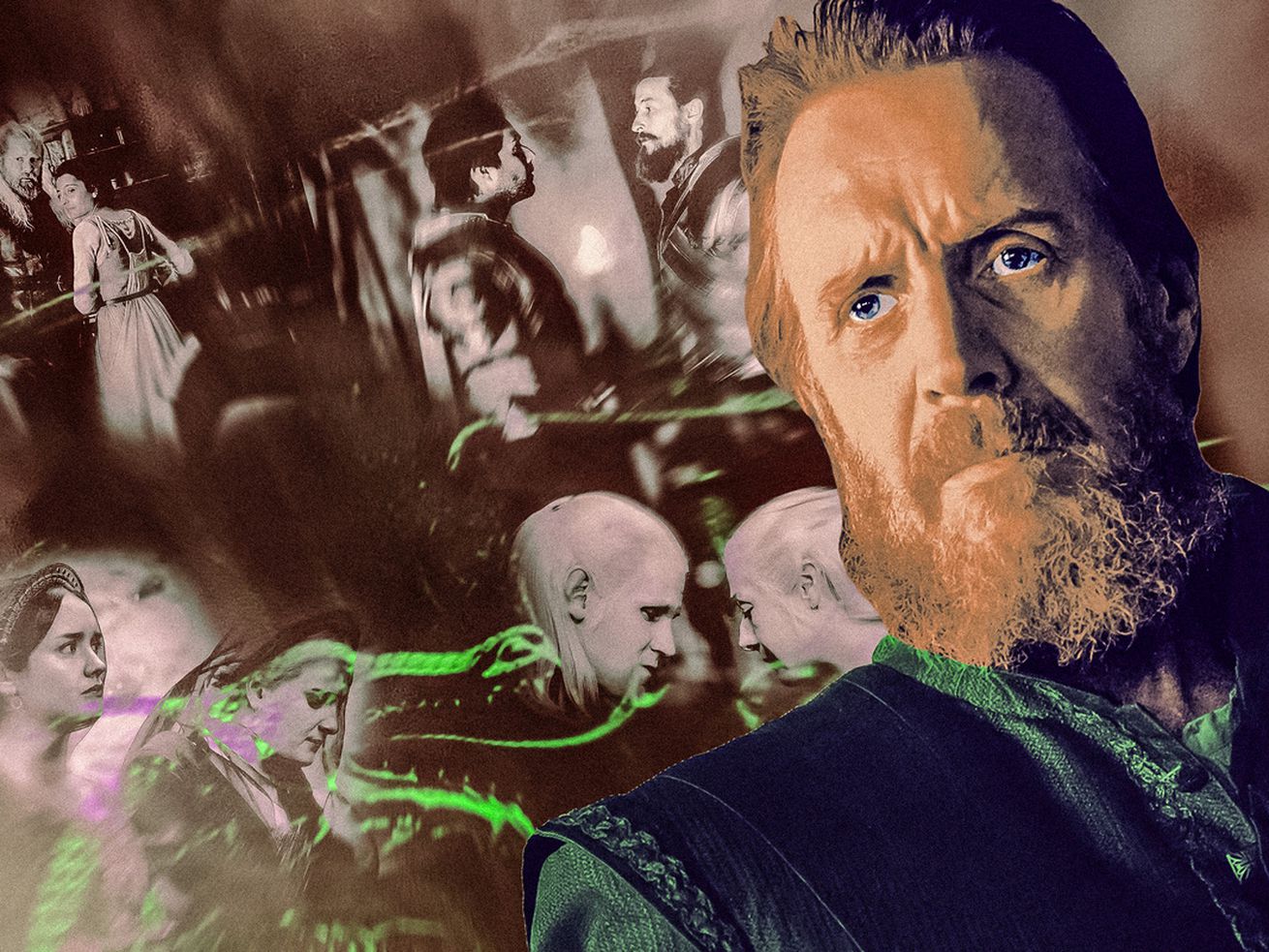
In this week’s ‘HotD’ deep dive, we look at who won the duel of twins, what the smallfolk are up to, what it means for Criston Cole to be both Lord Commander and hand of the king, and more
/cdn.vox-cdn.com/uploads/chorus_asset/file/25503606/spoiler_warning_v2.2.jpg)
RIP, Erryk and Arryk. Twins, knights, and the latest casualties in what is rapidly becoming a real war.
Welcome back to your weekly House of the Dragon breakdown. Today we’re taking a close look at the second episode of Season 2.
Deep Dive: How Much Loyalty Does a Westerosi Monarch Really Need?
During Jaehaerys’s funeral procession, it was impossible not to think of the Season 2 King’s Landing riot from Game of Thrones:
After seeing Myrcella off to Dorne, a royal procession makes its way back to the Red Keep. But at this point in the War of the Five Kings, the smallfolk in King’s Landing are starving. Food is not coming in as usual from the Riverlands, which has sided with Robb Stark, or the Reach, which has sided with Renly Baratheon. Plus, there are rumors swirling that Joffrey Baratheon is a bastard born of incest. Overall, there is not a lot to make the residents of King’s Landing loyal to the current Iron Throne claimant.
A few cries go up for food. “Please your grace, we’re hungry!” Then someone throws a cow pie—Tyrion’s words—at Joffrey, and Joffrey responds by ordering his personal guard to kill everyone around him. And, well, things escalate from there. Joffrey, Sansa, Tyrion, and everyone else in the royal retinue are lucky just to escape unharmed. Well, almost everyone in the royal retinue; one unnamed man is visibly torn apart, limb from limb, by the mob.
This is one reason a king needs to worry about his perception in the realm. The royal family may have the shiny armor, the towering castle, and the giant metal chair made of melted swords, but King’s Landing is home to half a million smallfolk. The common residents of the city are generally unorganized and unconcerned with the game of thrones that the nobles play, but upset them, and a king can quickly become something of a hostage holed up in Maegor’s Holdfast.
The singers in Westeros will eventually call the coming civil war between the greens and the blacks the “Dance of the Dragons.” But right now it’s a dance of sentiment. Both sides in this episode show great concern over how they are perceived in the realm. Otto wants Aegon II to win not only the smallfolk, but also the undeclared houses in Westeros to the greens’ side by stoking sympathy through a funeral procession for Jaehaerys. And when Aegon strings up a bunch of ratcatchers from the castle walls for all to see, it undoes a lot of that good will. For Rhaenyra, Jaehaerys’s murder does the exact opposite, making her look like a monster to those who believe she gave the order.
You might think all of this seems somewhat inconsequential. The Targaryens have dragons! Who cares what the soil-bound in Westeros think in the face of flying, fire-breathing dinosaurs?
But even recent Westerosi history shows that it takes more than dragons to hold the Iron Throne. Roughly 80 years before the events depicted in House of the Dragon, King Maegor I ruled the Seven Kingdoms. Maegor was the son of Aegon the Conqueror and the third Targaryen to sit the Iron Throne—and he was an absolute despot. His reign was defined by dragonfire, beheadings, and rape. Just to give you a taste of Maegor’s tyranny: It was Maegor who oversaw the construction of the Red Keep. When it was finished, he threw a grand feast for the builders … then had them all executed to keep the secret passageways that honeycomb the castle a secret. (Subsequently, he found it difficult to find workers for other construction projects, such as the Dragonpit).
After six years of Maegor on the Iron Throne, the realm had had enough. At Storm’s End, Maegor’s nephew Jaehaerys, who had just turned 14, announced a claim for the throne, saying he should be the rightful king as the crown had previously belonged to his father, Aenys. Suddenly the realm was staring down a Targaryen civil war. (Sound familiar?)
Only this civil war ended before it got started. Maegor went to call his banners, but his Grand Maester had deserted him. His hand resigned. Two knights of his Kingsguard vanished. The Velaryons declared for Jaehaerys, costing Maegor the royal fleet overnight. One of his wives, Rhaena Targaryen, escaped King’s Landing on her dragon Dreamfyre (the current mount of Helaena) and went to join Jaehaerys. When Maegor ordered the Hightowers to execute Rhaena’s daughter Rhaella, who was in Oldtown training to become a Septa, the Hightowers refused him. One by one, every single great house forsook Maegor. He was left in King’s Landing with a measly host of 4,000 men, along with his dragon Balerion the Black Dread.
Before the realm could see what kind of destruction Balerion alone could cause—or whether he’d be any match for the three dragons on Jaehaerys’s side—Maegor was found dead, impaled upon the Iron Throne. It is still a mystery who killed him. Some say that the throne itself did it.
Point being: There is only so much the realm will tolerate. A similar scenario plays out with the Mad King Aerys II Targaryen, who was overthrown when great houses like the Baratheons, Starks, Tullys, and Greyjoys rose up against the crown in Robert’s Rebellion. It was over when Tywin Lannister—formerly the longtime hand of Aerys—turned against him and sacked King’s Landing. (Aerys didn’t have a dragon to keep the realm in check, but still.)
So let’s look again at the current conflict. How is each side faring in the war for hearts and minds?
When Rhaenyra was a child, the singers at court dubbed her “The Realm’s Delight.” This was a time of plenty, when King Viserys and his wife, Aemma, frequently hosted feasts and tournaments for Westeros’s various lords. Fire & Blood tells us that Rhaenyra was “cherished and adored by all” as a child.
Many in Westeros still remember this version of Rhaenyra. And remember the middle of Season 1, when she was being courted by marriage suitors? We got only a small taste of that process on-screen, but it involved Rhaenyra visiting many lords in the Riverlands and Westerlands (and probably the Reach too, though the book is less clear on this point). Many of these lords still have fond memories of a royal visit, which often bring feasts and plenty to their castles. Here’s how Fire & Blood describes Rhaenyra as war is brewing:
There had been a time when she had been well loved by highborn and commons alike, when they had cheered her as the Realm’s Delight. Many a young lord and noble knight had sought her favor then … though how many would still fight for her, now that she was a woman wed, her body aged and thickened by six childbirths, was a question none could answer.
Of course, there are elements working against Rhaenyra’s reputation as well. Her children with Laenor are widely believed to be bastards—and one of those bastards would inherit the throne after her. And after the murder of Jaehaerys, word of Rhaenyra’s alleged cruelty is now spreading across the realm. “The Realm’s Delight” seems an awfully long time ago.
Plus, Aegon II has a cock, and for many in Westeros that’s all that matters. In Season 1, Daemon takes Rhaenyra to the Street of Silk, and they watch a play that insinuates as much. Rhaenyra, upset at this depiction of her, tells Daemon that the desires of the smallfolk “are of no consequence.” Daemon responds,“They’re of great consequence if you wish to rule them one day.” Ah, if only Daemon had remembered that when his actions led to the murder of a child!
Both sides agree that the murder of Jaehaerys is an enormous blunder for the blacks. Otto tells Aegon that sympathy from the murder could “double your strength.” Bartimos Celtigar tells Rhaenyra that “the damage to our position is immeasurable,” while Alfred Broome insinuates to Rhaenyra’s face that he isn’t positive she’s innocent. As Rhaenyra sums it up to Daemon: “You have wounded me, weakened my claim to the throne, my ability to raise an army, my standing among my own council.”
Only, Aegon II neuters the impact by stringing up a bunch of innocent ratcatchers (“and one guilty one,” he says). Add that to the calamity that was Aegon’s coronation, his reputation for frequenting the child-fighting pits, and the fact that he let his son get murdered in the first place, and the king looks weak and cruel.
Dozens, if not hundreds, of houses in Westeros remain undeclared. If either Rhaenyra or Aegon II could present a compelling case to the realm that they are the next Jaehaerys while their opponent is the next Maegor, this war could be over with minimal bloodshed. So far, both sides are failing somewhat spectacularly.
Quick Hits
The smallfolk we know so far
Speaking of the smallfolk, Season 2 of House of the Dragon has pivoted from Season 1’s approach of sticking exclusively with the royals to giving commoners some screen time. We’re getting good looks at the life of normies in both King’s Landing and Driftmark.
Last week we met Hugh, a blacksmith in King’s Landing who appealed to King Aegon II to grant him an advance on payment for his works, which includes the scorpions that are designed to protect the city from dragon attack. This week, we not only saw Hugh again, but also met his wife and daughter. And on closer look, his wife appears during the funeral procession for Prince Jaehaerys.
Hugh, his wife, and his ailing daughter are the type of smallfolk who suffer “when princes lose their tempers,” as Sylvi, the brothel madam Aemond likes to visit, notes. Hugh is hopeful that Aegon’s promise of advanced payment will help his family, but his wife isn’t so certain. “Did he say when?” she asks.
On Driftmark, we reconvene with Alyn, who we learn has a brother, Addam. Addam in particular is a different flavor of smallfolk—he’s eager to prove himself and raise his station. But Alyn, the more experienced brother, knows a war is brewing. He’s not so quick to share in Addam’s ambitions. Later, Addam sees Seasmoke flying above Driftmark.
At this point you might be asking: Who are these people? I can’t say much more, but we’ve seen enough of these characters that it’s safe to surmise they’re important. Keep your eyes peeled for them going forward.
Who won the duel?
If you don’t know whether it was Erryk or Arryk that won the duel between twins, well, that was kind of the point. But let’s try to figure it out anyway.
This fight features a lot of camera cuts. There are crucial moments where the lens points at Rhaenyra or Elinda as Erryk and Arryk hack away at each other, obscuring which is which. But the key to telling the two apart happens early in the fight, when one knight slashes the other’s knee and punches him, sending him to the ground:

All images courtesy of HBO
Immediately, the standing knight takes a swing at Rhaenyra.
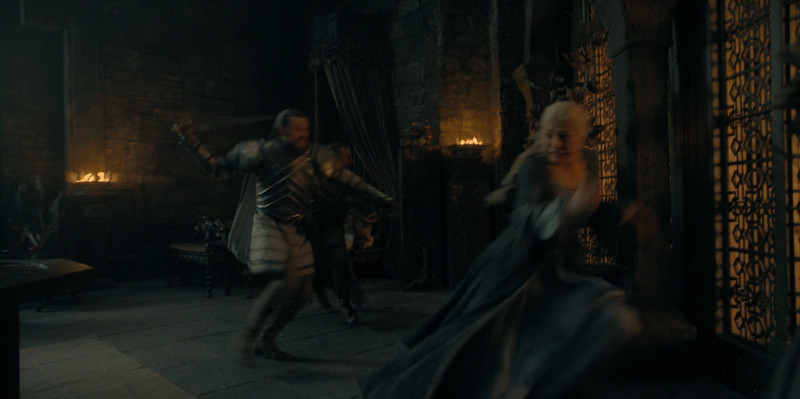
So this much seems clear: The injured knight must be Erryk, who fights for Rhaenyra, and the healthy one is Arryk, who’s loyal to Aegon II.
The fight continues. The two are slashing, kicking, and circling each other. Ser Lorent Marbrand arrives. Unarmored, Lorent grabs Rhaenyra and brings her to a corner of the room. But he and Rhaenyra don’t have the luxury of being able to pause their television screens, so they are clueless as to which knight is which, and can only watch as the fight plays out.
At this point, the knight with the injured knee pummels the healthy one into a corner and starts choking him. This is the whole “we were born together” and “but I still love you” bit. And here the battle turns, as the knight who hasn’t been slashed claws at the injured one’s knee, sending the latter crawling backward toward his sword, which lies on the ground. When he grabs it and turns back to take a swing at his brother, the knight without the leg wound stabs him, killing him. Just to confirm, you can even see that the dead knight’s knee is bleeding when he’s lying on the ground:
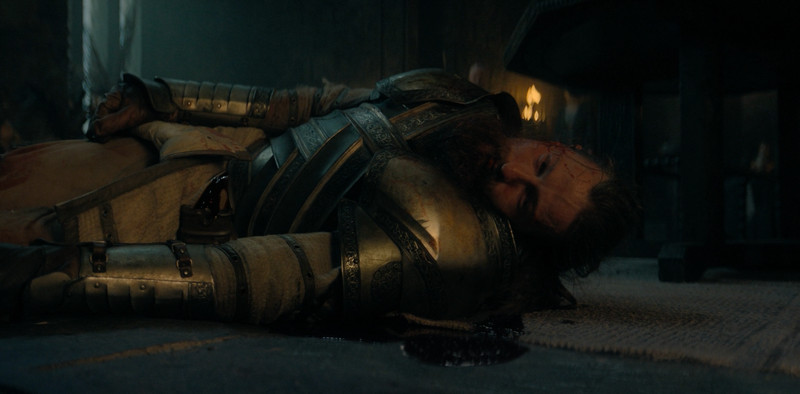
This all seems pretty straightforward, right? Erryk must be the injured knight because it was the uninjured one who clearly tried to slash Rhaenyra earlier. So Arryk, Aegon’s knight, is our winner. Only, what happens next appears to contradict that. The surviving knight looks at Rhaenyra and says “Your Grace, forgive me” and then impales himself upon his sword. Why in the world would Arryk do that?
The final moments of this scene would make way more sense if it were Erryk who won the fight. His apology would be because he nearly failed in his duty to protect the queen—from his own blood, no less!—and his subsequent suicide would be out of shame related to that. It could also be because he realizes that no matter what he says now, no one would trust that he is really himself.
So why would Arryk kill himself instead of trying to complete his murderous mission? Maybe he had a change of heart in his final seconds of life. Maybe he felt too much shame about killing his brother to continue. (For what it’s worth, Fire & Blood tells us that Arryk was very unhappy with this assignment, and that “the troubled knight visited the Red Keep’s sept on the night he was to sail, to pray for forgiveness to our Mother Above.”)
And yet there is a last-minute twist: After the episode, showrunner Ryan Condal said that it was Erryk who won the duel and fell on his sword. But that seems to contradict what we saw onscreen. This is all very muddled, but again: maybe that’s the point.
Daeron lives!
Last week, I wrote about how Alicent’s third, as-yet-unseen son was trending toward not appearing in the show, after Otto had neglected to mention him when the hand gave the small council an update on the happenings in Oldtown. But now we have Otto calling out Daeron by name. Glorious day!
Daeron should be almost exactly the same age as Jacaerys (the two shared a wet nurse as infants by order of King Viserys, in the hope that they would grow close). Otto believes that Daeron will take instruction better than Aegon, and on this point he is almost surely correct. Fire & Blood describes Daeron as “the youngest and gentlest” of Alicent’s children. It also says he was “the most popular of the queen’s sons, as clever as he was courteous, and most comely as well.”
Daeron rides the cobalt-and-copper-colored dragon Tessarion, which is implied to be around the same age as he is. That would likely make Tessarion of a comparable size to Vermax, Jacaerys’s dragon.
Doggo
Speaking of major characters who got a much-needed proof of life this episode, Westeros’s favorite dog is confirmed to be alive and healthy (and possibly better off without his old master):
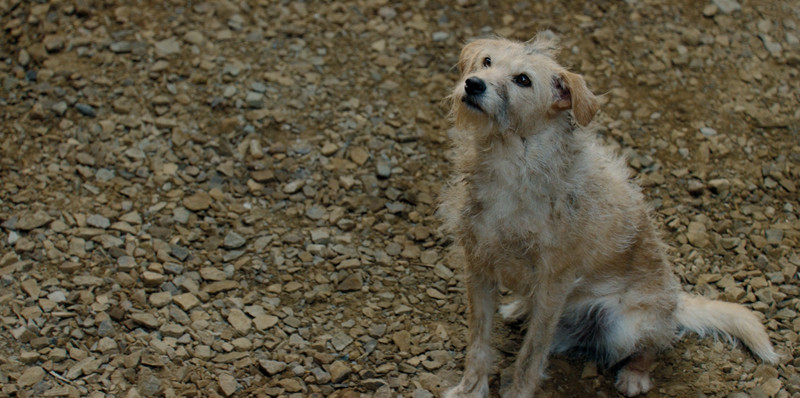
The status of Highgarden and the Reach
At the end of the episode, Otto is set to go to Highgarden, as some of House Tyrell’s bannermen have yet to declare for Aegon II. In fact, House Tyrell itself has yet to declare for a side in the war, even though the Hightowers—themselves bannermen to the Tyrells—are obviously strongly in the greens’ camp. Fire & Blood tells us that the lord of House Tyrell is currently Lyonel Tyrell, “a mewling boy in swaddling clothes.” Thus, his mother, castelland, and steward have been named as his regents, and are ruling the Reach in his name. These characters go unnamed in the book, but we may see them on screen if the camera follows Otto to Highgarden.
Uniting the Reach may not prove so easy for Otto, however. While the Hightowers have extremely close ties to the greens, the rest of the region is not in the same position. Take, for example, House Beesbury. Remember Lord Lyman Beesbury, King Viserys’s master of coin, whom Criston Cole somewhat accidentally killed in the hours after Viserys’s death? House Beesbury is a prominent noble house in the Reach, and as far as the Beesburys, Lyman is still alive and imprisoned by the greens. In the book, House Beesbury demands Lyman’s release, but the greens, who are covering up Lyman’s death, are forced to refuse. That leads to the Beesburys declaring for Rhaenyra and the blacks.
The Lord Commander becomes hand
Congratulations to Criston Cole on his big promotion. This makes him just the second person in Westerosi history to be hand of the king while also serving as Lord Commander of the Kingsguard. The only previous person to hold both offices was Ser Ryam Redwyne, whom we saw briefly in the first episode of Season 1. (It’s his death between episodes that leads to the opening in the Kingsguard that Criston Cole fills.)
Ryam was briefly hand under King Jaehaerys after the previous hand, Septon Barth, died. How did his tenure go? Pylos, a maester serving Stannis Baratheon in A Clash of Kings, summed up his term: “Ser Ryam Redwyne was the greatest knight of his day, and one of the worst Hands ever to serve a king.” Grand Maester Allar, as quoted in Fire & Blood, was even more blunt: “Some problems cannot be solved by hitting them with a stick.” It’s not clear exactly what made Ryam so poor at this job, but Jaehaerys removed him from the post after only a year.
Criston Cole is the latest to take both jobs—and neither will be easy. With Ser Arryk now dead, he has only one other known knight in his Kingsguard (Rickard Thorne), and so needs to make five new hires. And with a war brewing, as hand he must manage all the communication and ally-gathering that Otto was previously in charge of. All while banging the king’s mother. Surely nothing could go wrong!
Rhaenyra’s necklace
Remember the necklace Rhaenyra made a point of wearing all the time in Season 1? The one Daemon gave her way back when she was just a teenager?
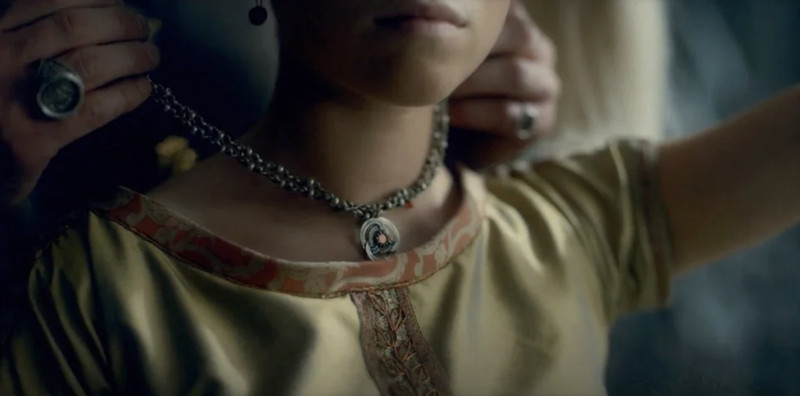
It’s disappeared. In this season’s premiere, she was without a necklace:
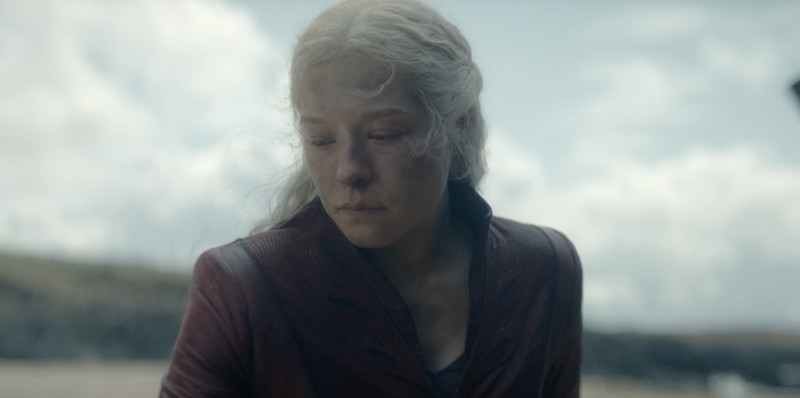
And in this episode, she wears a different one:
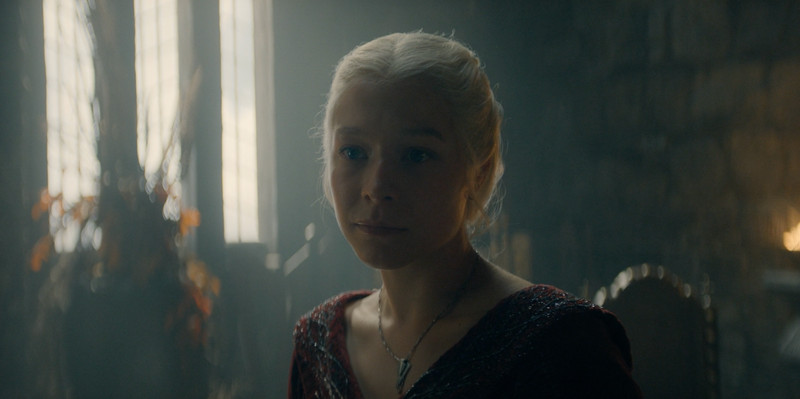
Safe to say, her rift with Daemon is running pretty deep.
What’s in Rhaenyra’s book?
Before meeting with Mysaria, Rhaenyra cracks open a dusty tome and starts flipping through the pages. This contrasts her with Aegon II, who spent this episode destroying his father’s model of Old Valyria. Viserys was a student of history, and Rhaenyra takes after her father.
Of course, I couldn’t resist seeing what’s actually on the pages that she glances over. The first one is a bit difficult to parse, though it’s clearly about Aegon the Conqueror and his sister wives:
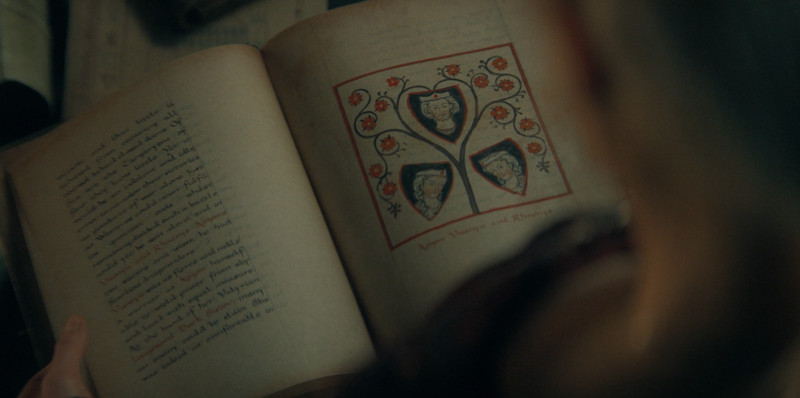
I found the second paragraph legible. It reads:
Visenya was as fierce and noble a warrior as Aegon himself, able to wield power from sky and land with equal measure. At the hand of her Valyrian longsword Dark Sister, many an enemy could be slain. She was indeed as comfortable on…
And the second page is more clear.
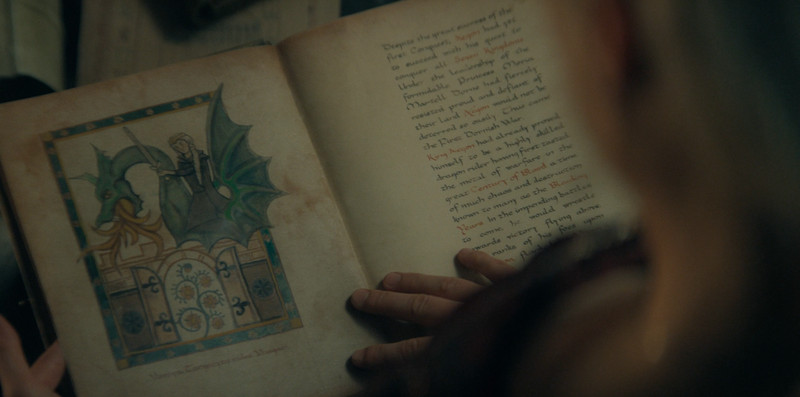
Here’s that text:
Despite the success of the first Conquest, Aegon had yet to succeed with his quest to conquer all the Seven Kingdoms. Under the Leadership of the formidable Princess Meria Martell, Dorne had fiercely resisted, proud and defiant of their land. Aegon would not be deterred so easily. Thus came the First Dornish War. King Aegon had already proved himself to be a highly skilled dragon rider, having first tasted the metal of warfare in the great Century of Blood, a time of much chaos and destruction known to many as the Bleeding Years. In the impending battles to come, he would wrestle toward victory, flying above … ranks of his foes upon Balerion, flanked by Visenya.
None of this tells us anything we don’t already know, but it’s neat to get a quiet moment with Rhaenyra that echoes her father.
The Board Before Us
The map remains relatively unchanged since last week, with the only notable movement being that of Daemon, who has left Dragonstone (seemingly to head to Harrenhal), and Otto, who is set to leave King’s Landing, bound for the Reach.
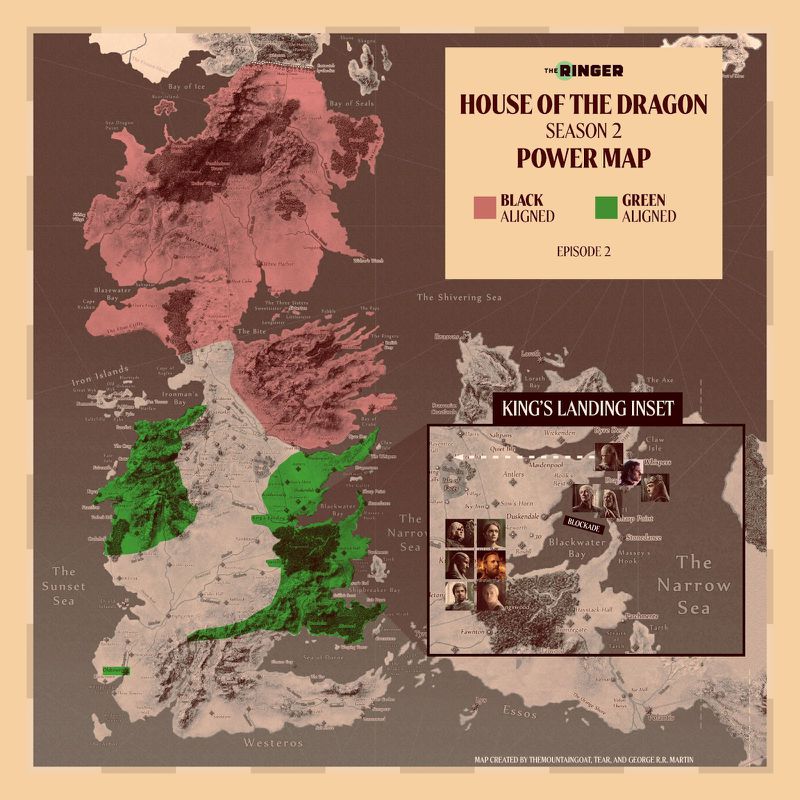
Next Time On
The trailer for Episode 3 promises war. And it’s not just the blacks and the greens that are ready for a fight. The Brackens and the Blackwoods—two Riverlands houses and ancient, bitter rivals—are ready to throw down.

